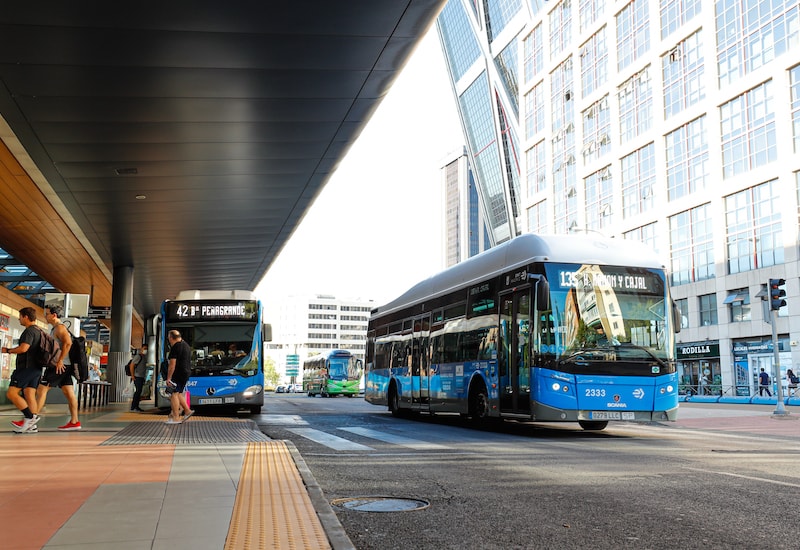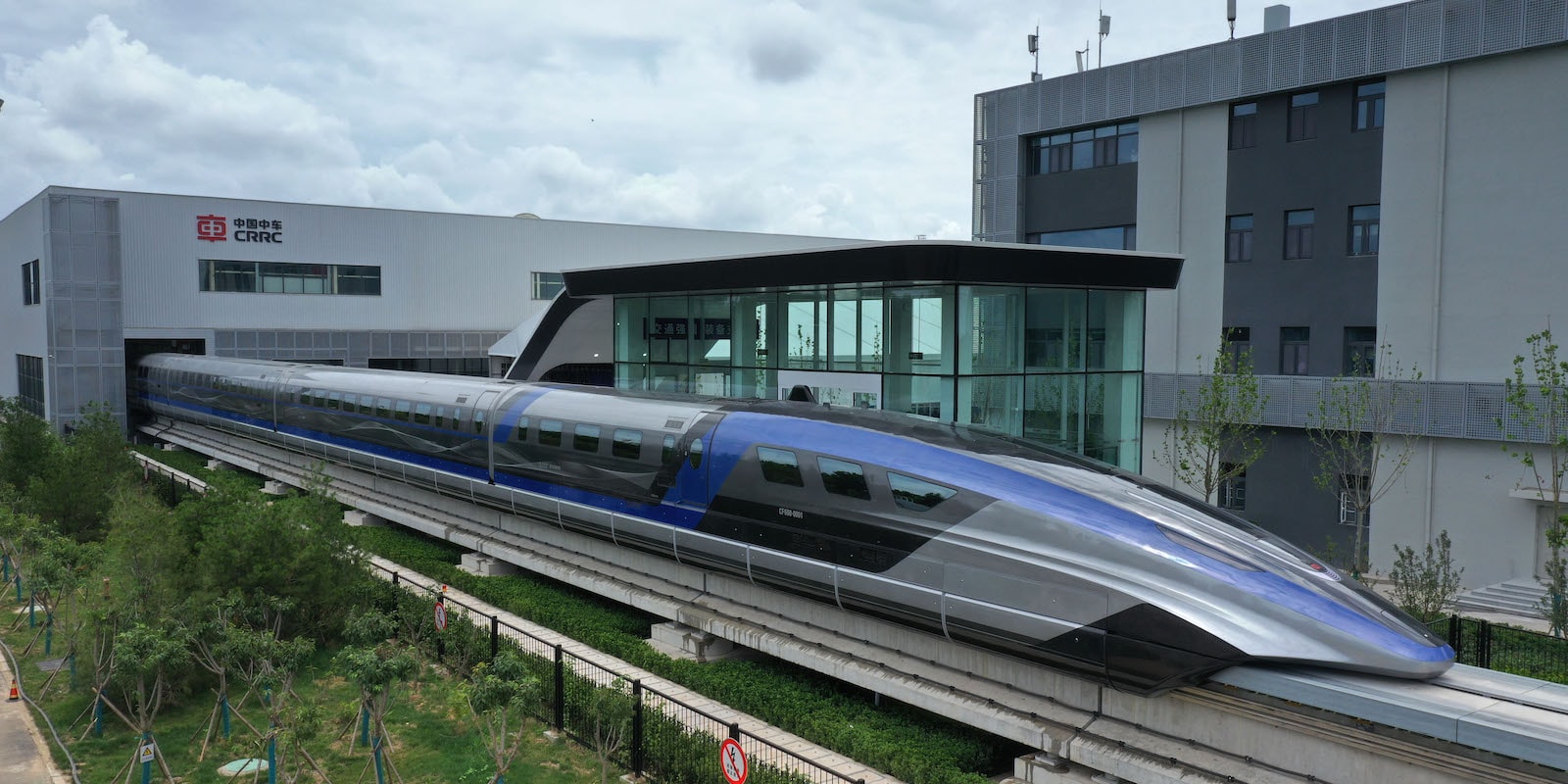Tuesday, July 4, 2023
Most of the population will live in cities in the coming decades. By the year 2100, the UN expects that at least three out of every four people will live in urban environments, thus increasing the need to find sustainable solutions in areas such as mobility, which is also one of the main emitters of polluting gases.
By José Miguel Pascual Labrador (EFE). Photo by Zhang Jingang.
Despite the pandemic paralyzing virtually every street in the world, transportation recovered quickly and, in cities such as Madrid or Barcelona, by 2021 the levels of 2019 had been almost fully reached. In one way or another, mobility is now fundamental to the daily activities of 56% of the world's population and 81% of people living in urban environments in Spain.
Sustainability as a transport driver
The central government is aware that in order to mitigate the negative effects of climate change, it is necessary to have sustainable urban transport that is accessible to all. In fact, the Ministry of Transport, Mobility and Urban Agenda (MITMA), has started working on a Sustainable Mobility Law aimed at "having a relevant impact on people's quality of life." The pillars of this text are: mobility as a social right, clean and healthy mobility, a digital and innovative transportation system, and better investment to serve citizens. It is also planned to allocate up to €6.67 billion in Next Generation funds for "sustainable, safe and connected" mobility.
One of these initiatives will be developed by the company Avanza, together with the Zaragoza City Council, with a PERTE R&D project for the electric and connected vehicle, under the name DIGIZITY, to design and implement solutions in zero-emission buses. Avanza’s CEO Valentín Alonso explained to Planet Energy that he is "convinced" that vehicle automation is the perfect tool to improve the sustainability of transportation. In his opinion, "digitizing certain processes is very important, as it allows a more efficient use of resources, for example, the autonomy of electric vehicles." "If in spring the electric bus is able to travel 300 kilometers, maybe in summer it is only able to travel 200 kilometers due to air conditioning needs. We are investigating with sensors to try to air-condition the vehicle according to the influx by zones," Alonso confirmed.

Photo by Luís Millán (EFE)
In addition, a new system that drastically reduces the cost of green hydrogen production is being piloted by scientists from the Korea Institute of Science and Technology, the Center for Hydrogen and Fuel Cell Research, and the Department of Energy Engineering at Hangyang University. For the moment, the materials used and the fragility of the system prevent it from being applied at an industrial level, but its developers maintain that it is a great alternative to electric vehicles.
In fact, Moeve and Damas signed an agreement in February 2023 to use green hydrogen in intercity road transport, on the road to sustainable mobility. This alliance, the first of its kind in Spain, will enable Damas' fleet of vehicles to have at least ten buses powered by this sustainable fuel in the provinces of Seville, Huelva and Cadiz, in a first phase scheduled to last until 2025.
"Vehicle automation is the perfect tool to improve the sustainability of transportation and make efficient use of resources" (Valentín Alonso, CEO of Avanza)
In the United States, the company Local Motors presented a few years ago a vehicle with recycled materials and parts created with 3D printers. The LM3D Swim prototype featured an electric motor, special software from Siemens, including Solid Edge, which would allow the development team to perform direct modeling, and IBM systems to design the technologies for driving, safety and traffic efficiency.
Although they announced that their Knoxville (Tennessee) factory had the capacity to manufacture 2,400 units thanks to four or five large 3D printers, the project did not catch on in the market. They leveraged their expertise to improve the circularity of large-format additive manufacturing (LFAM) and certify the feasibility of recycling thermoplastic scrap parts and chips from the 3D printing process. In another of their projects, the Olli autonomous bus, they claim that using 3D printing to build parts of the bus allows a cost savings of almost 50%. Local Motors Technical Product Director Johnny Scotello said in a statement that "building next-generation vehicles means adopting next-generation manufacturing processes."
Imagining the future: Will vehicles fly?
Artificial intelligence is, according to industry professionals, the linchpin of any innovation in transportation. The combination of technology and human talent will be the necessary synergy to achieve the sustainability of the planet. The International Union of Public Transport (UITP) Promotion and Outreach Advisor, Dionisio González, believes that we have to "be able to convert information and knowledge, in order to offer a service more adapted to the changing needs of citizens" so that, in any case, urban and metropolitan mobility can be structured with "efficient door-to-door alternatives."
For a long time, movies and literature have dreamed of transferring roads from the ground to the sky, with flying vehicles that yield space on Earth to people. A paradigm shift that still lacks the technological foundations, despite trials in the United Arab Emirates with the drone in EHang 184, a single-person aircraft weighing 225 kilograms, in which one person can travel with a maximum weight of 100 kilograms and space for a small suitcase. At the moment, it has a flight range of 50 kilometers on a single charge, with speeds of up to 160 km/h (100 mph).
Finally, other disruptive ideas include China's Maglev train , currently in operation in Shanghai, which, thanks to the principle of attraction and repulsion created between two magnetic fields, allows the vehicle to rise a few centimeters above the tracks and reach speeds exceeding the 400 km/h that it travels. Ideas that will surely give meaning to the urban planning of the future.
¿Te ha parecido interesante?





